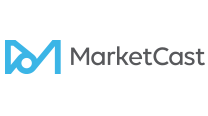MarketCast Brings Brand Effect Into CTV, Measuring Ad Resonance
Makes deal to use data from Vizio’s Inscape

Looking to grab a foothold in a shifting television measurement multiverse, MarketCast said it was expanding its Brand Effect product into the fast-growing connected TV space.
While most big data measurement upstarts look to compete with Neislen in counting viewers and impressions, Brand Effect measures how much impact, or “resonance,” a commercial ad has on the viewers who see it, and now, in which programming and which networks an ad is likely to have the most resonance.
Brands have used Brand Effect on linear TV for years. Now. through a deal to use smart TV data from Vizio’s Inscape unit, Brand Effect can identify CTV viewers who have seen a particular commercial and find out how many viewers recalled the ad, how many remember the brand message and how many associated the ad with the correct advertiser.
MarketCast works with blue-chip advertisers including Capital One, Wells Fargo, Nissan, AT&T and Ford, representing about 30% of primetime TV ad clients. “They all wanted to be in CTV. They were all moving budgets over to CTV already, MarketCast chief marketing officer Graham McKenna told Broadcasting+Cable.
MarketCast acquired Brand Effect when it bought Phoenix Marketing International last year.
“Our goal was to infuse it with more of a technology foundation, more data science rigor and expand beyond linear TV,” MarketCast chief data science officer Tom Weiss said.
The expansion will allow advertisers to take the familiar tools with which they measure advertising in linear video to CTV’s Wild West.
Broadcasting & Cable Newsletter
The smarter way to stay on top of broadcasting and cable industry. Sign up below
At the same time, Brand Effect can now tell them “where is my advertising going to be most effective,” Weiss, previously head of data science at Inscape, said. “I think this is much more of an optimization and a planning tool, more than really anything else.”
The Brand Effect expansion comes amid a debate, with traditional TV programmers arguing only premium, professionally produced, or at least long-form video should be counted, while YouTube argues all video, including user-generated content, should be measured in the same way and all impressions should be equal.
Also Read: Joint Industry Committee on Measurement Invites YouTube
“Now there is an offering for the sell side that goes beyond reach,” McKenna said.
McKenna said Brand Effect is designed to be a complement to all of the providers of reach metrics, from Nielsen to iSpot.tv, Comscore and VideoAmp.
Brand Effect has been certified by NBCU, which has been pushing to create a measurement of content quality, and is MarketCast to generate its Content Quality Index, McKenna said.
“We’re going to be able to show the impact of that advertising itself in terms of resonance and in terms of recall and memorability,” McKenna said. “So we think it offers a nice balance to reach.
Said Weiss: “People want something they can add to the equation on currency. NBC is the first of our sell-side partners to say, ‘Absolutely, they want that.‘ ”
NBCU and MarketCast will be running a trial of the Brand Effect Resonance Ratings feature with advertisers and other measurement providers through the end of the year.
MarketCast is also starting a proof of concept with iSpot.
“We’ve got a lot of conversations going on at the moment with other partners,” Weiss said.
“We’re excited to expand our partnership with MarketCast to include Inscape’s cutting-edge streaming ad-detection solution,” Vizio VP, data licensing and insights Ken Norcross said. “Doing so gives MarketCast an ability to achieve their goal of providing higher-fidelity data and insights to advertisers seeking to capitalize on the opportunity that exists within the CTV ecosystem.
“By way of the most robust, representative and reliable source for smart TV data in America, Marketcast will now be able to help drive key upper funnel metrics that CMOs find critical to inform their ad strategy and creative decisions.”
Brand Effect surveys about 15,000 people a day, giving it a level of detail not seen on other measurement platforms, Weiss said. Participants are asked whether they recall seeing certain commercials, what those commercials said and which brand they were for.
“The problem is it was just a survey-based methodology. We thought we could transform it with behavioral data” from Inscape, he said.
Weiss said a high score on Brand Effect correlates with strong business outcomes.
“The problem with outcome measurement is it really only works effectively for certain categories of products,” he said. “There is this desire in the market to have something which is closer to outcomes than say attention or impressions. There are many categories where we can get that correlation and we see it works absolutely fabulously.” ▪️
Jon has been business editor of Broadcasting+Cable since 2010. He focuses on revenue-generating activities, including advertising and distribution, as well as executive intrigue and merger and acquisition activity. Just about any story is fair game, if a dollar sign can make its way into the article. Before B+C, Jon covered the industry for TVWeek, Cable World, Electronic Media, Advertising Age and The New York Post. A native New Yorker, Jon is hiding in plain sight in the suburbs of Chicago.

